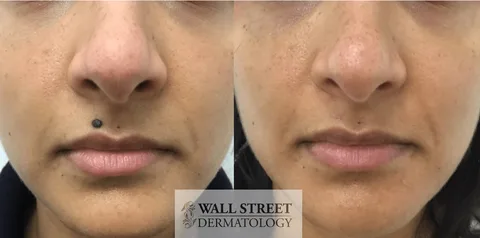Does Insurance Cover Mole Removal?
Moles are common skin growths that most people have at some point in their lives. While many moles are harmless, some can be unsightly or even pose health risks. If you’re considering mole removal, you might be wondering whether your health insurance will cover the procedure. This article will delve into the details of mole removal, the circumstances under which insurance might cover it, and other important considerations.

What is Mole Removal?
Mole removal is a medical procedure to eliminate moles from the skin. Moles can be removed for various reasons, including medical necessity or cosmetic preference. The methods for mole removal include surgical excision, laser removal, and cryotherapy (freezing).
Medical Necessity vs. Cosmetic Reasons
Medical Necessity: If a mole is suspected to be cancerous or pre-cancerous, removal is considered medically necessary. In such cases, health insurance typically covers the cost of the procedure. For example, if a mole shows signs of melanoma, a type of skin cancer, your doctor will recommend its removal and your insurance is likely to cover it1.
Cosmetic Reasons: If you want a mole removed purely for cosmetic reasons, insurance coverage becomes less certain. Most insurance companies do not cover procedures that are deemed cosmetic. This means if the mole is not causing any health issues but you want it removed for aesthetic reasons, you might have to pay out of pocket2.
Factors Affecting Insurance Coverage
Several factors can influence whether your insurance will cover mole removal:
- Medical Diagnosis: A doctor’s diagnosis that the mole is potentially harmful is crucial for insurance coverage. Without this, the procedure is likely to be considered cosmetic.
- Insurance Policy: Different insurance policies have varying terms and conditions. It’s essential to review your policy or speak with your insurance provider to understand what is covered.
- Procedure Type: The method used for mole removal can also affect coverage. Some insurance plans may cover certain types of removal procedures but not others3.
How to Determine if Your Insurance Covers Mole Removal
- Consult Your Doctor: The first step is to consult with your healthcare provider. They can assess the mole and determine if removal is medically necessary.
- Check Your Insurance Policy: Review your health insurance policy or contact your insurance provider to get detailed information about coverage for mole removal.
- Get a Pre-Authorization: Some insurance companies require pre-authorization for procedures. Ensure you get this approval before proceeding with the removal to avoid unexpected costs.
Costs of Mole Removal
The cost of mole removal can vary widely depending on the method used and whether the procedure is covered by insurance. On average, mole removal can cost anywhere from $150 to over $1,5004. If the procedure is not covered by insurance, you will need to pay these costs out of pocket.

Preventing Skin Cancer
While mole removal can address existing concerns, it’s also important to take steps to prevent skin cancer. Here are some tips:
- Use Sunscreen: Apply sunscreen with at least SPF 30 every day, even on cloudy days.
- Wear Protective Clothing: Long sleeves, hats, and sunglasses can protect your skin from harmful UV rays.
- Avoid Tanning Beds: Tanning beds increase the risk of skin cancer and should be avoided.
- Regular Skin Checks: Perform regular self-examinations and visit a dermatologist annually for a professional skin check1.

Conclusion
Mole removal can be a straightforward procedure, but whether it’s covered by insurance depends on several factors, including the medical necessity and your specific insurance policy. Always consult with your healthcare provider and insurance company to understand your options and potential costs. Taking preventive measures can also help reduce the risk of skin cancer and the need for mole removal in the future.
If you have any further questions or need assistance, don’t hesitate to reach out to your healthcare provider or insurance company. They can provide the most accurate and personalized information based on your situation.
I hope this article helps you understand the intricacies of insurance coverage for mole removal. If you have any more questions or need further assistance, feel free to ask!
Leave a Reply